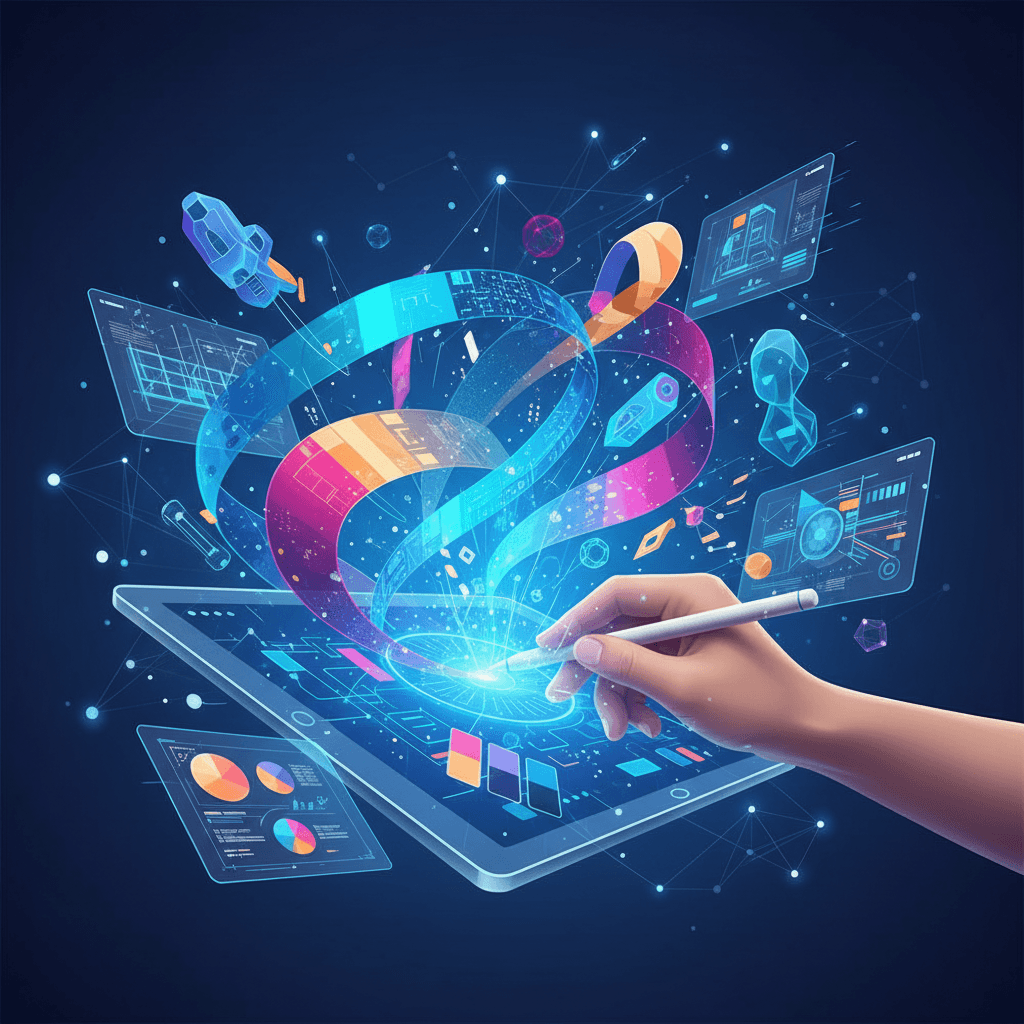Adobe: Creative Jobs Demand AI Fluency, Showcase AI in Applications
Adobe embraces AI-powered portfolios, signaling how human creativity amplified by technology is shaping the future of design.
October 12, 2025

In a rapidly evolving job market, Adobe, a titan in the creative software industry, is signaling a clear message to prospective employees: embrace artificial intelligence. The company is actively seeking applicants who not only possess traditional creative skills but also demonstrate fluency in using AI tools, particularly in the creation of work samples and designs for their applications. This move by Adobe is more than just a preference; it's a reflection of a significant shift in the creative landscape, where the synergy between human ingenuity and artificial intelligence is becoming a highly valued asset. The company's stance suggests that the future of creative work lies in the ability to effectively collaborate with AI, and it is looking for candidates who are already shaping that future.
Adobe's Chief Communications Officer, Stacy Martinet, has been vocal about the company's position, stating that work samples or designs created with the help of AI tend to capture their attention. According to Martinet, the company is in search of individuals who can harmoniously blend creativity with technical prowess. This approach underscores a belief that as AI continues to reshape communication, marketing, and creation, those who can pair their creative talents with AI fluency will hold a significant competitive advantage.[1] This sentiment is echoed by Adobe's Chief Strategy Officer, Scott Belsky, who has argued that AI will ultimately be a job creator rather than a displacer of talent. He points to features like Photoshop's generative expand tool as examples of how AI can boost productivity, freeing up designers for more creative exploration and experimentation.
The encouragement of AI-generated content in job applications is not merely about showcasing technical skills; it's about demonstrating an understanding of how these powerful new tools can enhance the creative process. Artificial intelligence can serve as a potent collaborator, helping to overcome creative blocks by generating a multitude of ideas and concepts.[2] For designers, this means the ability to quickly visualize and iterate on ideas, producing mockups and prototypes in a fraction of the time it would traditionally take.[3] AI can also automate repetitive and time-consuming tasks, such as image resizing and color correction, allowing creatives to focus on the more strategic and imaginative aspects of their work.[3][4] This efficiency not only streamlines individual workflows but also facilitates easier collaboration by providing stakeholders with more options in a shorter timeframe.[5] Furthermore, AI can assist in the curation and presentation of portfolios, analyzing a designer's body of work to highlight the most impactful projects and even tailor the portfolio to specific job opportunities.[6] The use of AI in crafting resumes and cover letters is also becoming more prevalent, with tools that can optimize these documents for applicant tracking systems and align them with the specific requirements of a job description.[7]
Despite Adobe's enthusiastic endorsement, the integration of AI-generated content into professional portfolios and job applications is not without its complexities and concerns. A primary challenge for hiring managers is to distinguish between a candidate who skillfully wields AI as a tool to augment their creativity and one who uses it as a crutch, lacking fundamental design skills.[5] The focus of portfolio reviews is shifting from purely evaluating the final aesthetic output to understanding the candidate's creative process and their ability to articulate the "why" behind their design choices.[5] Hiring managers are increasingly looking for evidence of critical thinking, problem-solving abilities, and a unique artistic vision, qualities that AI cannot replicate.[5] Consequently, transparency about the use of AI in a portfolio is becoming a "green flag" for many employers, who value honesty and a clear understanding of where human creativity took the lead.[5] There are also broader ethical considerations, including the potential for AI to perpetuate biases present in its training data and concerns around the originality and ownership of AI-generated work.[8]
The broader implications of this trend for the AI and creative industries are profound. The demand for "AI fluency" is giving rise to new job roles that didn't exist a few years ago, such as AI prompt engineers and creative technologists, who can bridge the gap between creative vision and AI execution.[9][10] Educational institutions are also adapting, with universities like San Diego State University offering micro-credentials in the academic applications of AI, including training on Adobe's own Firefly generative AI tools.[11] This reflects a growing understanding that the workforce of the future will need to be equipped with both creative and technical skills. However, there are also anxieties about job displacement, with some studies suggesting that roles with routine creative tasks are most vulnerable to automation.[12] The World Economic Forum, for instance, has noted a rising demand for AI and machine learning specialists while also ranking "Graphic Designer" among the fastest-declining roles.[10][12] This duality highlights the transformative, and at times disruptive, nature of AI's integration into the creative economy.
In conclusion, Adobe's encouragement of AI-generated designs in the hiring process is a clear indicator of the direction the creative industries are heading. The ability to proficiently use AI is no longer a niche skill but is rapidly becoming a core competency for creative professionals. While this shift offers exciting opportunities for increased productivity and innovation, it also presents new challenges for both job seekers and employers. Candidates must now demonstrate not only their creative talents but also their ability to thoughtfully and ethically integrate AI into their workflow. Hiring managers, in turn, must adapt their evaluation methods to look beyond the polished surface of a portfolio and assess the depth of a candidate's creative thinking and problem-solving skills. Ultimately, the future of creative work will likely be a collaborative one, where human artistry is amplified, not replaced, by the power of artificial intelligence.